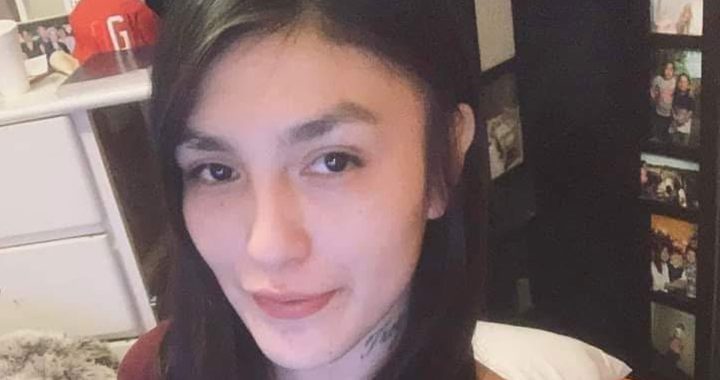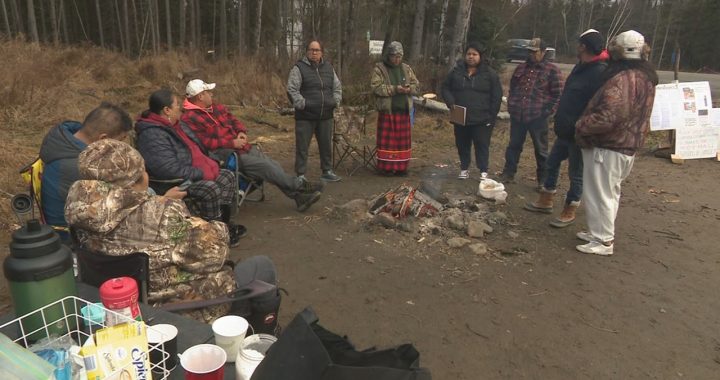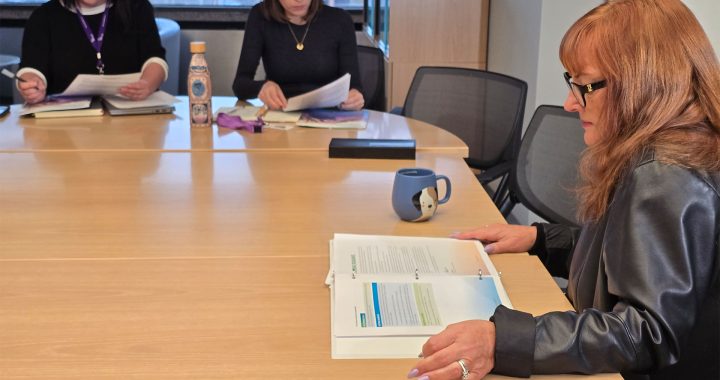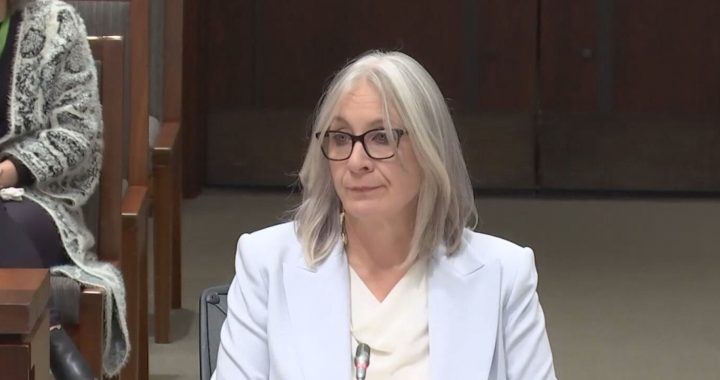Shirley Sanderson remembers the night nearly a year ago when she went from house to house on a Saskatchewan First Nation looking for victims of a deadly stabbing rampage.
She will not forget, but says her community needs to follow its traditions and culture to find healing.
“Creator wants us to heal,” the elder said Monday, standing near dozens of white teepees on the cultural grounds of James Smith Cree Nation.
The First Nation is hosting the Federation of Sovereign Indigenous Nations‘ annual traditional health gathering. Thousands of First Nations people are to travel to the community north of Saskatoon to hear their language, take part in ceremony and show support for the community as it tries to find a path forward.
Eleven people were killed and 17 were injured on the First Nation and in the nearby village of Weldon over the Labour Day weekend last year. Myles Sanderson, the 32-year-old killer, died in police custody a few days later.
“Each and every one of us lost family members that day on Sept. 4,” Chief Robert Head of Peter Chapman First Nation, one of three bands that make up James Smith Cree Nation, told a crowd during the grand opening of the healing ceremony.
“Not only that, but all of the membership here, all the families here that had tended to their loved ones that day (were) all traumatized, by the sights, the chaos, the devastation of that day.”
James Smith Cree Nation Chief Wally Burns said the community continues to struggle.
“Everything is slowly progressing with the healing process,” Burns said.
The four-day gathering will see people turn to healers and elders. People can gather confidentially and feel safe inside the traditional lodges, as well as pray in the old ways, the chiefs say.
The opening ceremony was also an opportunity for the First Nation to share thanks for the outpouring of support.
“In the past year, I’ve been hearing the resilience of our First Nations in our community,” said Chief Calvin Sanderson of the Chakastaypasin Band.
“I’ve got to commend our response team and our members who were out that day, that morning.”
He said the community went through a lot to become resilient and “come back strong and carry on that flame for our relatives.”
The chiefs placed star blankets on the shoulders of people who helped in the months since the killings. The chiefs also thanked those who assisted, including volunteers, businesses and governments.
They acknowledged nurses, other health-care providers and RCMP who aided in the immediate aftermath.
A table of Mounties went up one by one to shake the three chiefs’ hands.
Assistant Commissioner Rhonda Blackmore, commanding officer of the Saskatchewan RCMP, said it’s hard to imagine it has almost been a year.
“But gatherings such as this are the change for the future so that James Smith isn’t known as a place of tragedy but a place of hope and place of healing and a place of positivity for the future,” she said.
Many attendees wore shirts with “James Smith Cree Nation Strong” across the chest.
People shared a fish-fry lunch and listened to Indigenous National Hockey League player Ethan Bear and Indigenous Olympic medal-winning hockey player Brigette Lacquette share stories about overcoming difficulties in their careers.
Other people ran up for autographs from three Saskatchewan Roughriders players who came to show support.
The chiefs said the gathering was important to restore a sense of normalcy and safety.
Some family members of those who died were in attendance, but the chiefs said not everyone is at the same place in their healing.
“They are hurting on their own and they are trying to reach out,” Chief Sanderson said.
“It will take them some time to adapt to that tragedy.”









